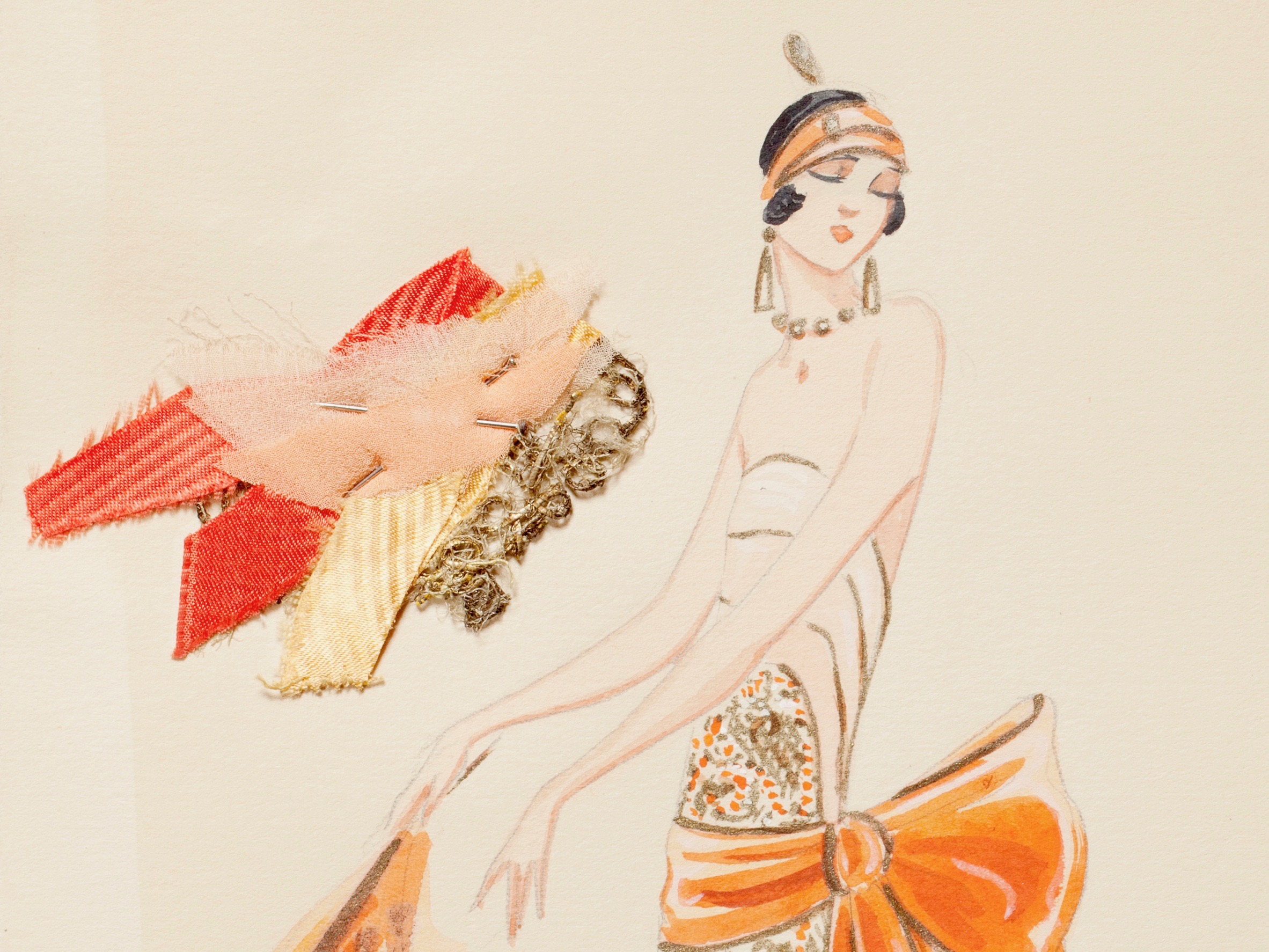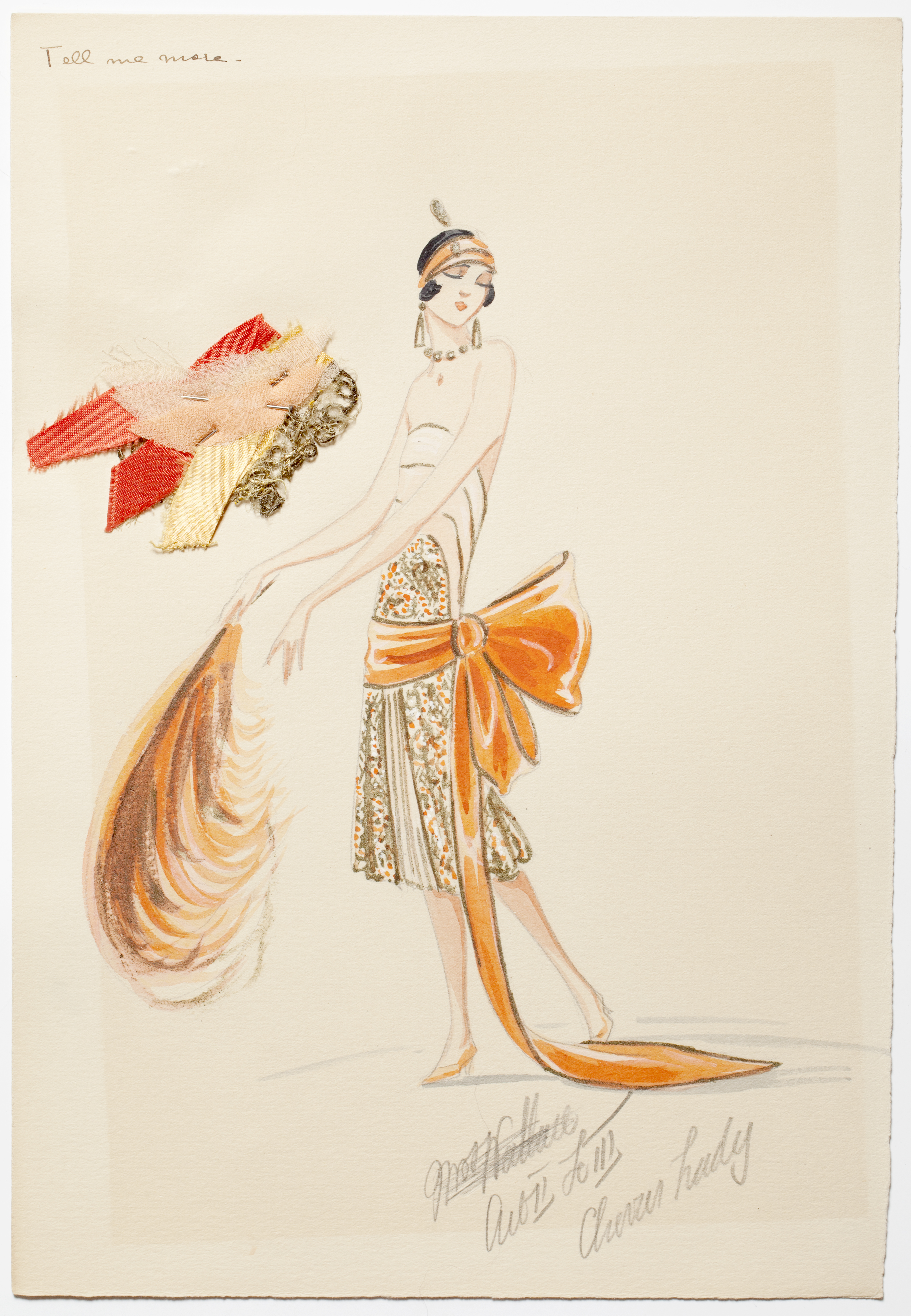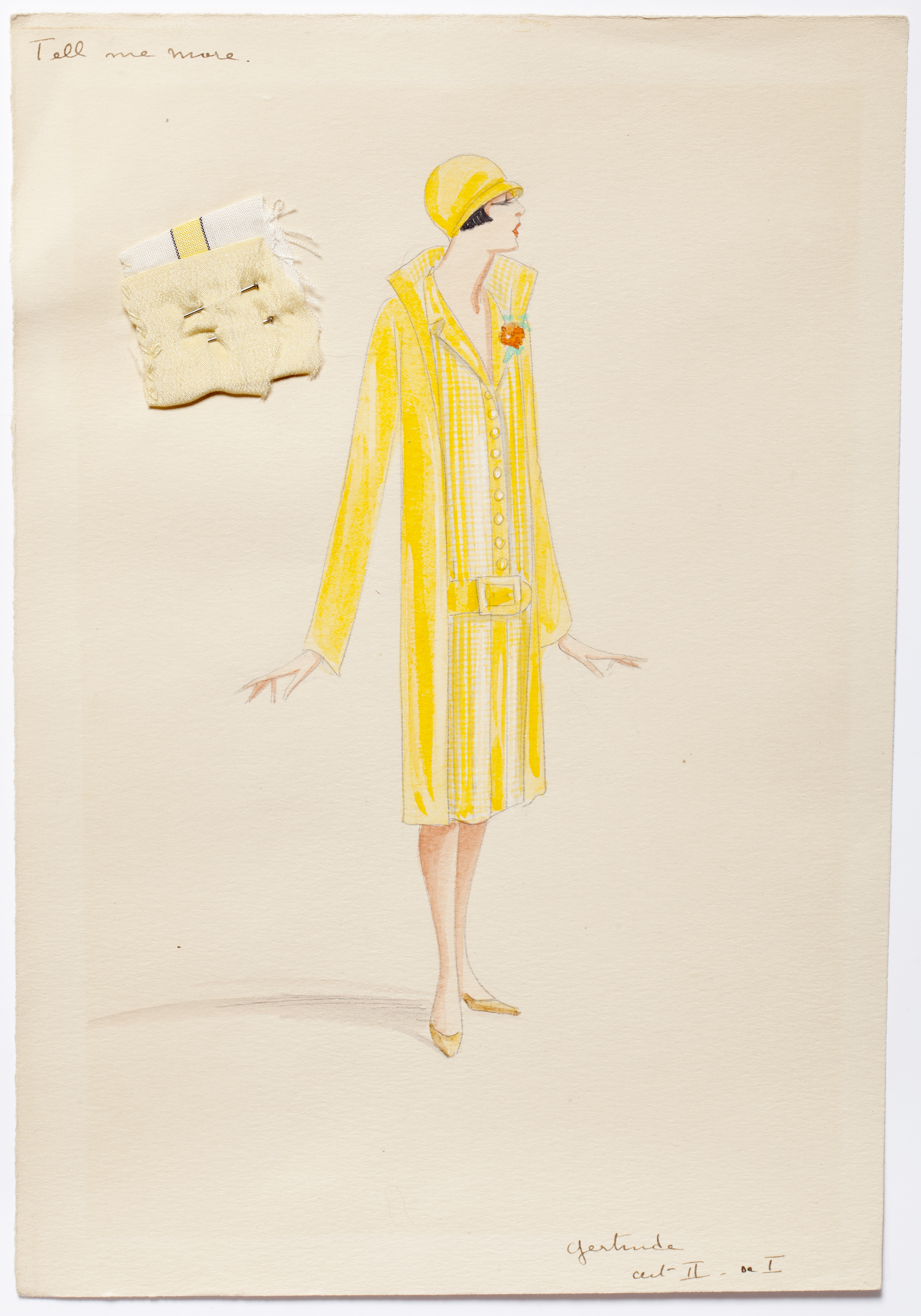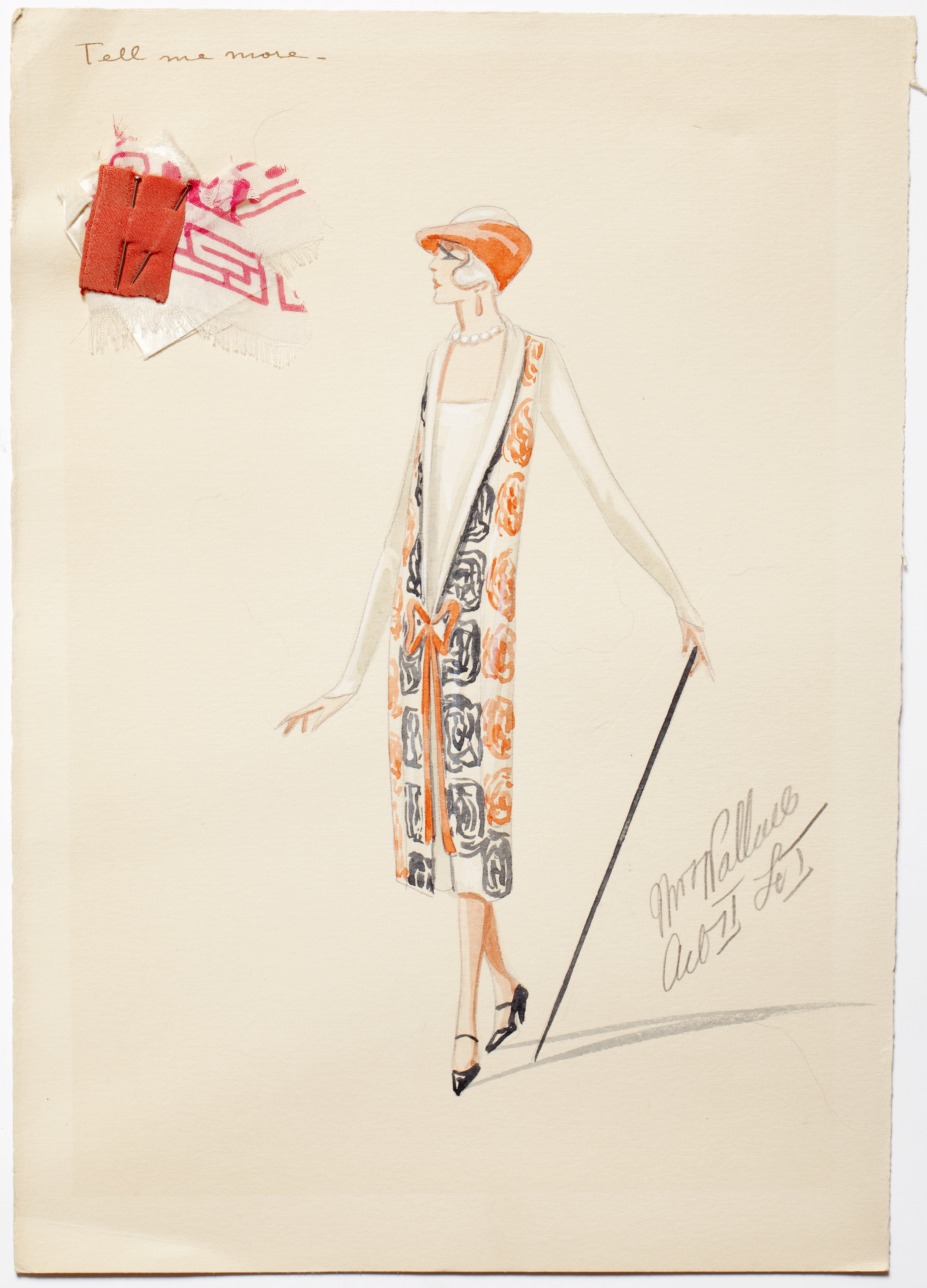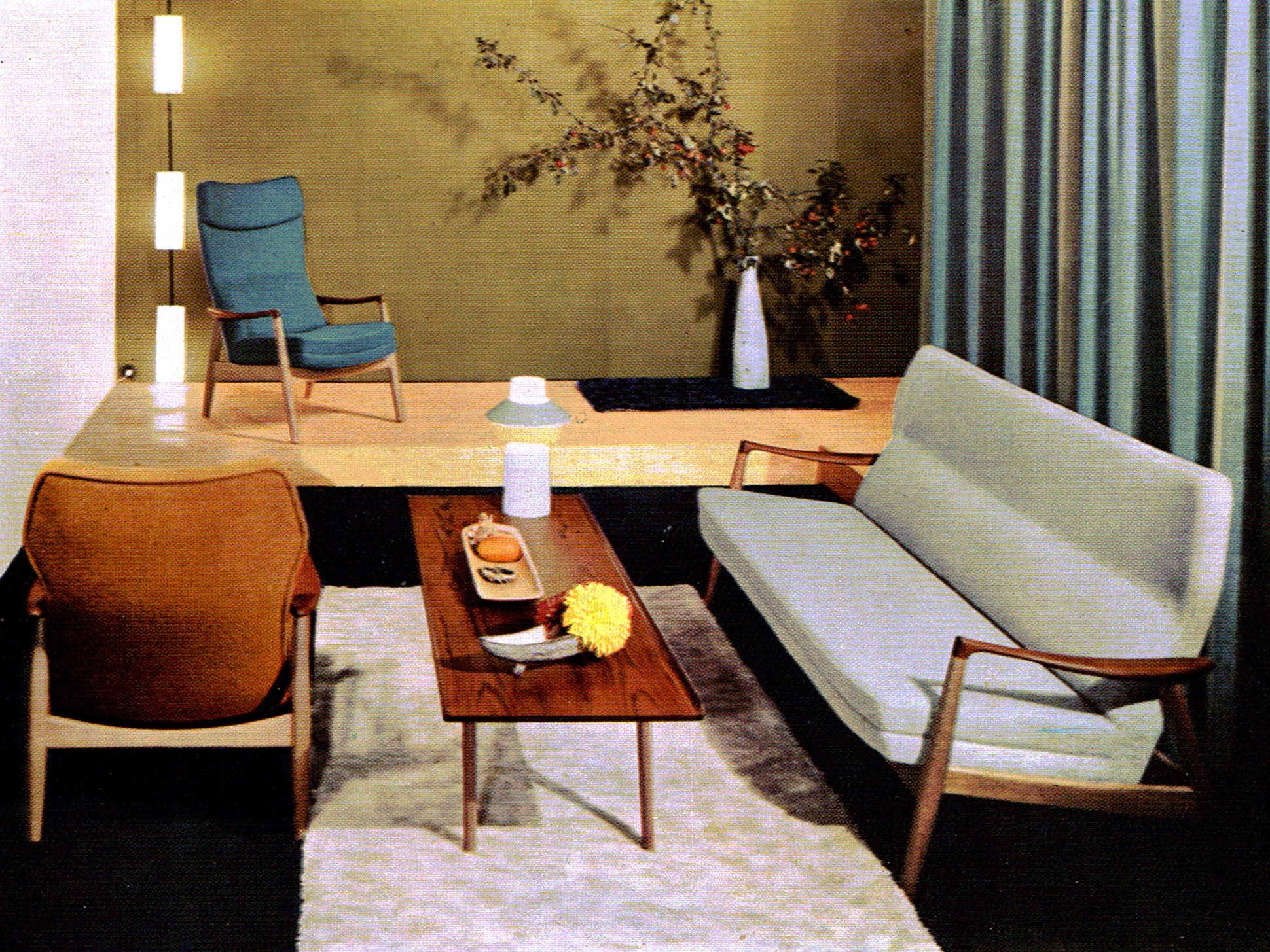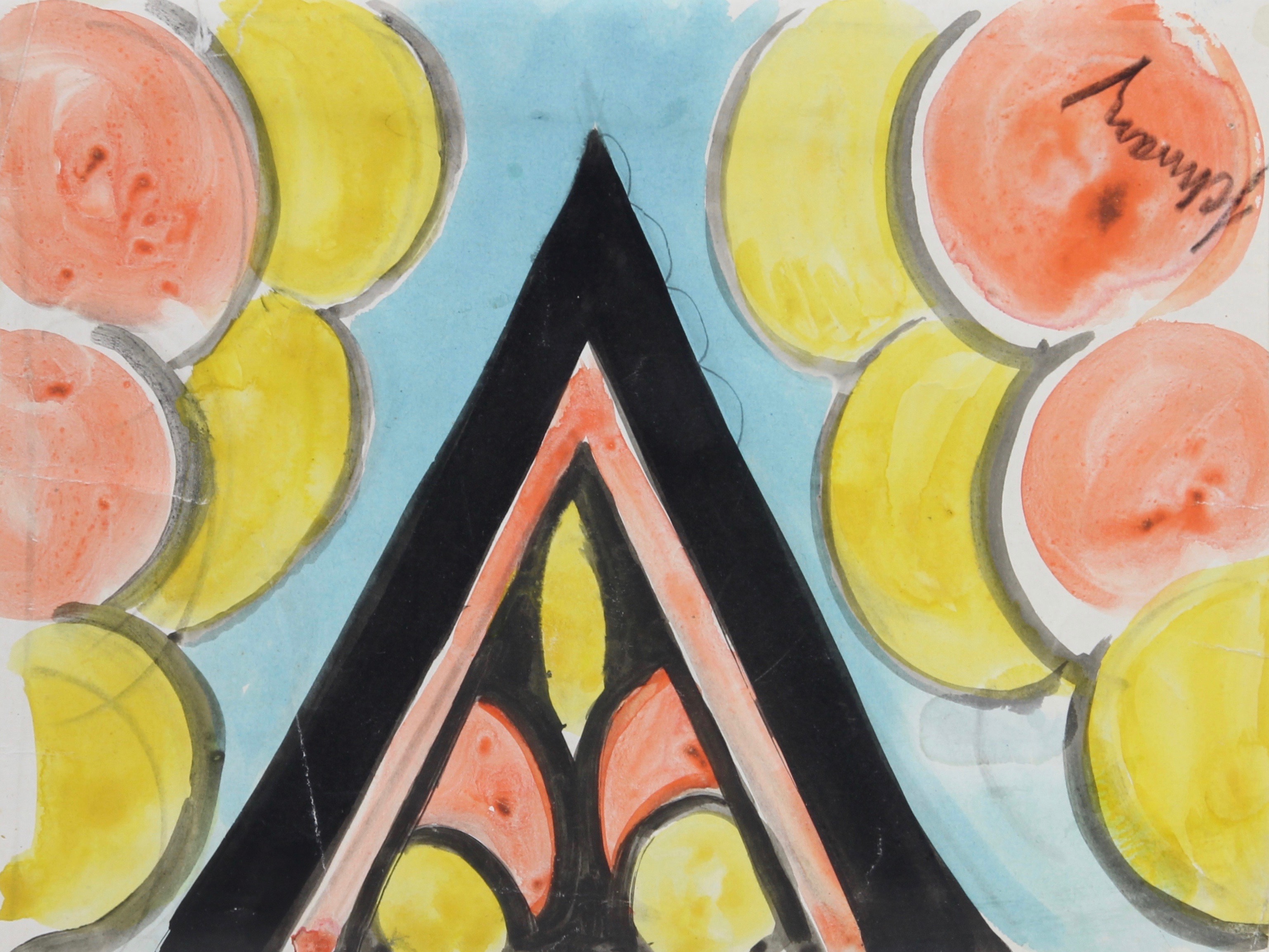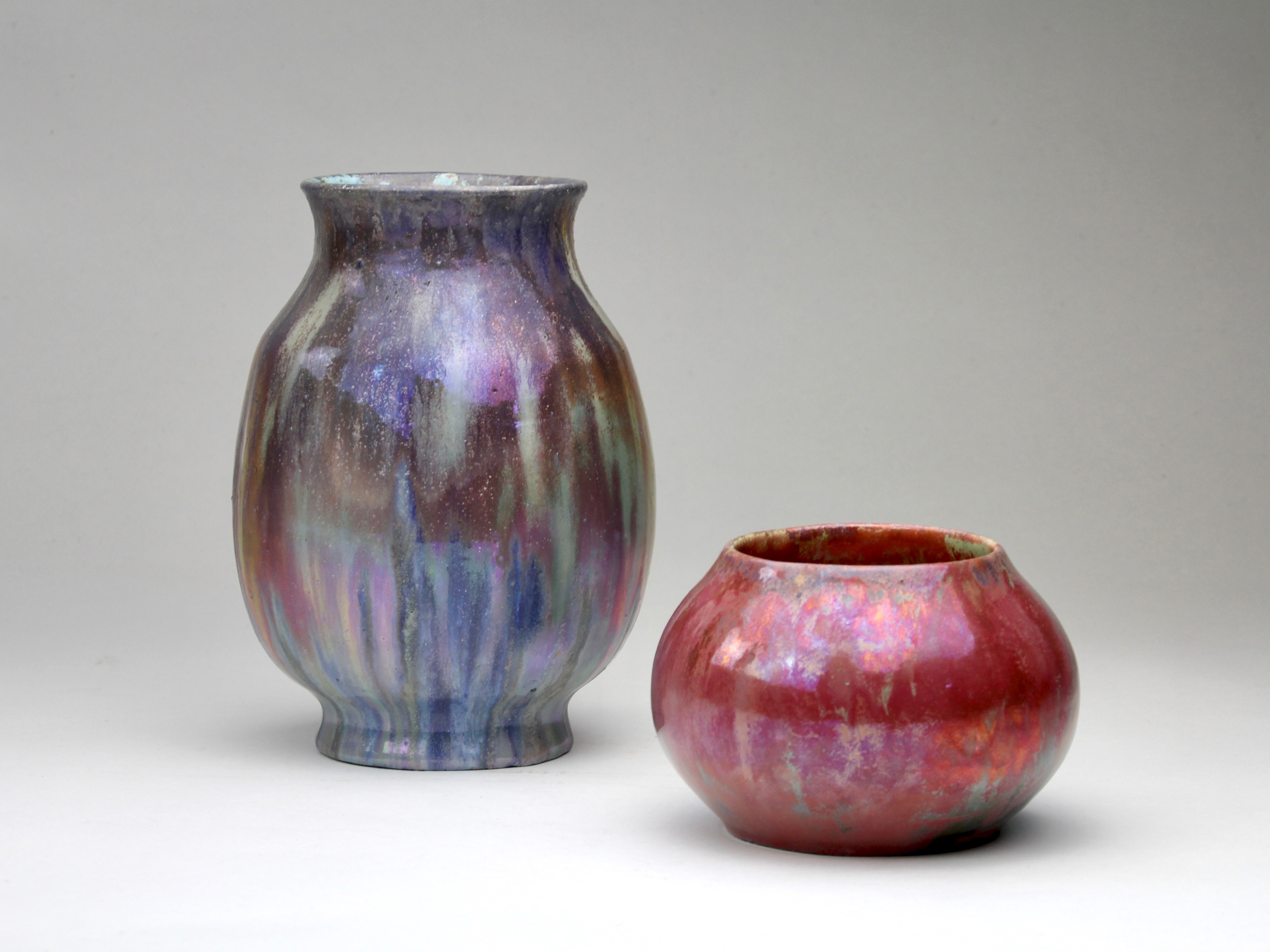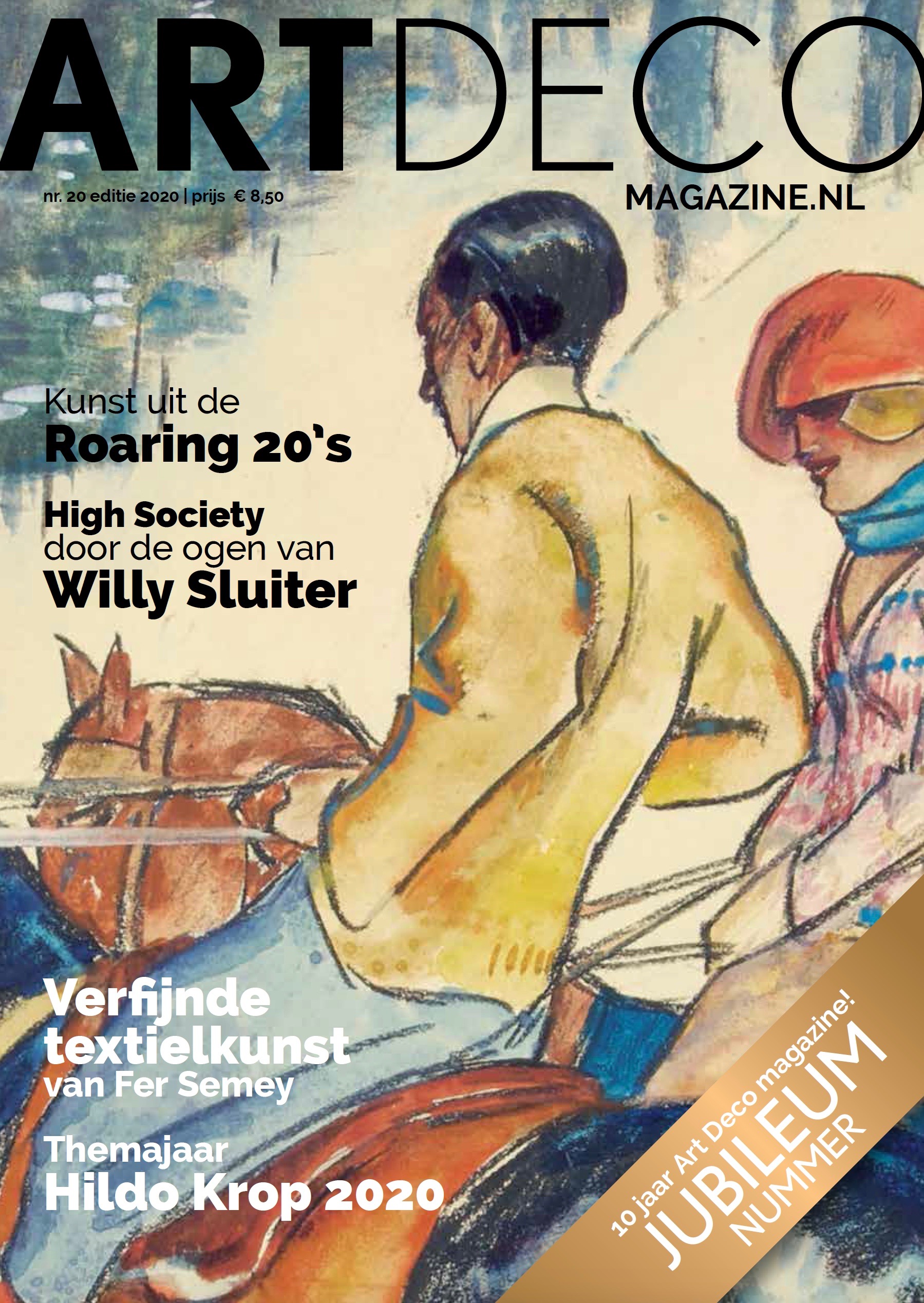Jazz Age: George Gershwin on Broadway
The purchase of a set of Art Deco designs is the start of a fascinating quest for its origin. We become immersed in the Jazz Age; New York, 1925. The successes of George Gershwin, his underrated Broadway masterpiece, and the posthumous appreciation for him three-quarters of a century later. It suddenly all feels very close…
Our journey through time starts with a tip we receive about a set of fashion designs in typical Art Deco style. At first, one would think of the Parisian creations by fashion designer Paul Poiret or fashion illustrator George Barbier. The aquarelles found, however, exude an ambience quite different to the works of the artists mentioned above. Each of the designs has fabric samples attached and a sign that says Tell Me More. The designs are accompanied by a letter, in which the term costume designs is mentioned. The letter was sent on July 9, 1925, from London to Sir George Tallis, His Majesty’s Theatre, in Melbourne, Australia. The letterhead reveals an address but no sender. The signature in blue ink is illegible.
Adventure Sticks to this Collection
We have serious interest in the decorative aquarelles; we are considering framing them and selling them through our art gallery per piece. Because we have to make a timely decision, we do some quick internet research to find out as much as we can about these designs. Our first reference point is Sir George Tallis. Rather soon, we discover an article in which Tallis is described as the most influential theatre personality in Australia during the nineteen-twenties. He owns theatres and cinemas across the continent and is the founder of two radio stations. A fascinating story, but it doesn’t bring us any closer to the origin of these designs…
If we study the autograph at the bottom of the letter once more, we seem to have deciphered the name, Malone. In combination with the title Tell Me More, this offers exciting links. Pat Malone turns out to be an important West End theatre producer in London in the early 20th century. Between 1920 and 1926, he brings several Broadway shows to the Winter Garden Theatre — amongst others, in 1925, the show Tell Me More. We become very excited when we discover that this is a George Gershwin musical. We still do not know who designed the costumes but there is a sense of adventure sticking to this collection — and we decide to purchase it.
Oscar-winning Costume Designer
When we continue our search after the purchase, we also discover the name of the costume designer: Charles LeMaire (1897–1985). And more so, we find out he was an Oscar-winning costume designer. LeMaire had become well-known as a costume designer of the 20s’ Broadway shows and, starting in 1925, he also worked in Hollywood. He designed costumes for more than three hundred Hollywood films and was the primary designer for Twentieth Century Fox during the 40s and 50s. He has been nominated sixteen times for an Oscar, winning three, for All About Eve (1950), with Bette Davis in the leading role, amongst others. We compare our costume designs with the designs of Charles LeMaire from United States museum collections from the 50s. Both the style and signature are alike. And for us that proves it: we have purchased the original costume designs of a Broadway musical of George Gershwin from 1925.
But what kind of musical was Tell Me More? The costumes emit a definitely fashionable Art Deco vibe. We decide to dive deeper into the Jazz Age.
On the Cover of Time Magazine
George Gershwin (1898–1937) is fifteen when he is offered a job as a plugger of popular sheet music — a big business at the time — thanks to his extraordinary skills on the piano. Two years later, he enters Broadway as a rehearsal pianist. Before long, the charismatic Gershwin has become a welcome guest at the many parties of New York society. When he meets ragtime composer Irving Berlin in 1919, an individual whom he admires, he offers his services. Berlin answers, “Why in heaven’s sake would you want to work for someone else? Work for yourself!” Six years later, George Gershwin is a musical star of grandeur. On July 20, 1925, he is on the cover of Time magazine. He exchanges his apartment for a five-floor townhouse. Gershwin is hot: he goes from one successful piano concert to another musical premier. On April 13, his musical Tell Me More premiers at the Gaiety Theatre. Reading his synopsis explains why LeMaire’s costumes are so fashionable: a significant part of the story happens at Maison Elise — a fashion house on Fifth Avenue.
‘Fred Astaire will definitely make this a hit’
As a follow-up to the popular musical Lady Be Good! in which Fred Astaire and his sister Adele are the main stars, the public interest for Tell Me More is a disappointment. The reviews are all very positive. The New York Times refers to the musical as “a first-class Gershwin show”, a good comedy with intelligent lines and an attractive young heroine, and fast and fiery dance routines. The New York Telegraph notes that the show would have been an instant hit had it had the Astaires. But the chosen cast is disappointing and so is the commercial success, and the show is halted after a hundred performances. In the meantime, on May 26, the West End version premiers. The show is drenched in the type of humour the Brits love, and with an excellent cast, the musical is a great success in London — for 262 runs. The year after, the third version of Tell Me More is shown in Australia. The opening show on July 17, 1926, takes place in the Theatre Royal in Melbourne. The musical continues in His Majesty’s Theatre and, after that, goes to Sydney, and then suddenly the curtain falls. Only the catchy foxtrot Kickin’ the Clouds Away is recorded in orchestra repertoire. The musical itself has been forgotten.
Time Capsule
This could have been the end of the story if Gershwin’s original piano compositions hadn’t been retrieved from the warehouse of Warner Brothers Music in 1982. Music producer Tommy Krasker has been engaged in the reconstruction of the musical sound since 1986. This leads to an orchestral recording of Tell Me More in 2001. Gershwin's original material intrigues him, Krasker writes at the time of the CD release: “Many popular Gershwin shows are so often changed over the years; they are far removed from the original. But Tell Me More was like a time capsule that made its light shine on Broadway in the twenties”.
In terms of music, the musical finally receives the appreciation it deserves after three-quarters of a century. But that’s not the end of it. The storyline also appears to have passed the test of time. Tell Me More is about three couples who are able to surmount many obstacles and misunderstandings — a timeless theme.
As off-Broadway producer Martin Platt listens to the CD of Tell Me More in 2001, he falls head over heels in love with it. After years of negotiation with the Gershwin heirs, he gets permission to make a show on the basis of piano and song, which he brings to the stage in Manhattan. Platt sees this as a test case for a complete musical production with the revamped texts.
Just like Tommy Krasker, Platt considers Tell Me More a piece of paramount importance. It stands for a revolution in theatre music, as the traditional sounds of the operetta sound is superceded by a new sound—the ‘heat and jazz’ that would make Gershwin famous.
‘A musical that makes you smile’
Platt fell in love with the unruly beat of Why Do I Love You and some “big fun” comedy songs, he tells us when we contact him, “It's just a musical that makes you smile”. The negotiations with some of the Gershwin’s heirs are still on-going. In the meantime, Platt has found some interesting new material — and asks how many original costume designs we possess?
This results in an open ending to the history of a set of Art Deco costume designs that travelled from New York to London and ended up in the Netherlands whilst passing through Melbourne. Will they be able to play yet another part in New York after ninety years, at the remake of Tell Me More…?
The depicted costume designs are a selection of a large set, which is part of the sales collection of Kunstconsult.
Photos: Dennis A-Tjak
© Kunstconsult – 20th century art | objects
Reproduction and distribution of this text is only allowed with correct reference.
